- About MAA
- Membership
- MAA Publications
- Periodicals
- Blogs
- MAA Book Series
- MAA Press (an imprint of the AMS)
- MAA Notes
- MAA Reviews
- Mathematical Communication
- Information for Libraries
- Author Resources
- Advertise with MAA
- Meetings
- Competitions
- Programs
- Communities
- MAA Sections
- SIGMAA
- MAA Connect
- Students
- MAA Awards
- Awards Booklets
- Writing Awards
- Teaching Awards
- Service Awards
- Research Awards
- Lecture Awards
- Putnam Competition Individual and Team Winners
- D. E. Shaw Group AMC 8 Awards & Certificates
- Maryam Mirzakhani AMC 10 A Awards & Certificates
- Two Sigma AMC 10 B Awards & Certificates
- Jane Street AMC 12 A Awards & Certificates
- Akamai AMC 12 B Awards & Certificates
- High School Teachers
- News
You are here
Solving the Cubic with Cardano - Depressing the Cubic
Depressing the Cubic
The problem Cardano set himself in Chapter 14 of the Ars Magna is [Cardano 1662, p. 253]:
Let, therefore, the cube ae, in the figure of Chapter 12, equal six times the square on ac and 100.
Symbolically, this is \(x^3=6x^2+100.\)
Cardano first reduced the problem to “cube equal to thing and number,” whose solution he had presented earlier in Chapter 12. This reduction, or “depressing the cubic,” transforms the equation \(x^3=6x^2+100\) to \(y^3=12y+116,\) where \(x\) and \(y\) are related by \(x=y+2.\) In these modern times, students often see this transformation in calculus, in which the function \(f(x)=ax^3+bx^2+cx+d\) is translated by the substitution \(x\rightarrow{x-\frac{b}{3a}},\) moving the unique inflection point of \(f(x)\) to the origin and resulting in a function \(g(x)=ax^3+Cx+D\) with no quadratic term. Cardano achieved this geometrically, as follows.
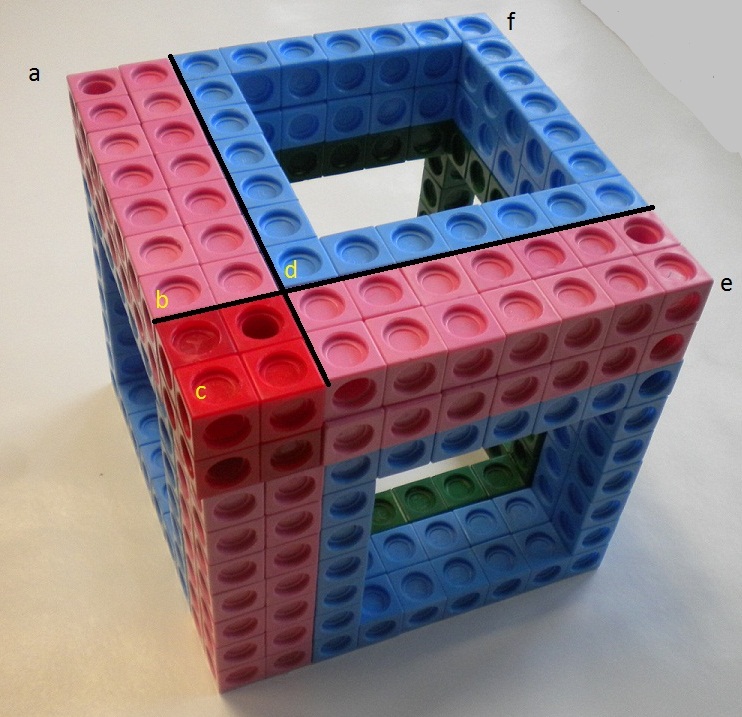
Figure 4. The cube ae.
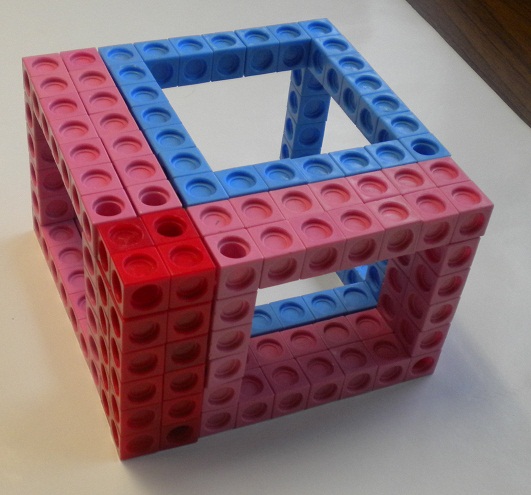
Figure 5. A solid with same base as the cube ae, but height 6.
Figure 4 presents the cube ae, and Figure 5 presents a solid with the same base as the cube but a height of six. As mentioned before, these particular physical solids have specific sizes, but they are meant to stand for the general case. Here, the cube ae has an unknown side-length ac, while the solid in Figure 5 has the same (unknown) base, but a known height of six units. Hence, the volume of the cube ae is (ac)3 and the solid in Figure 5 has volume 6(ac)2, where ac is the unknown side-length. Equating the solids in these two pictures gives us the equation \(x^3=6x^2.\) Since, in the depression of \(x^3=ax^2+b\) to \(y^3=Ay+B,\) the number \(b\) is not geometrically manipulated, I leave it out of the pictures.
So how did Cardano perform this depression? Starting with the cube ae, he decomposed it into eight solids by cutting the side ac at a point b, as described in the previous section. The point b is arbitrary, although in these pictures I had to choose a specific place to locate it. The eight solids can be regrouped into four solids, as shown in Figures 6 and 7. The original unknown, the edge ac\(=x,\) was represented in Figure 4 above by the edge of the cube. The new unknown of the depressed equation, the edge ab\(=y,\) is the edge of the green cube in both Figure 6 and Figure 7.
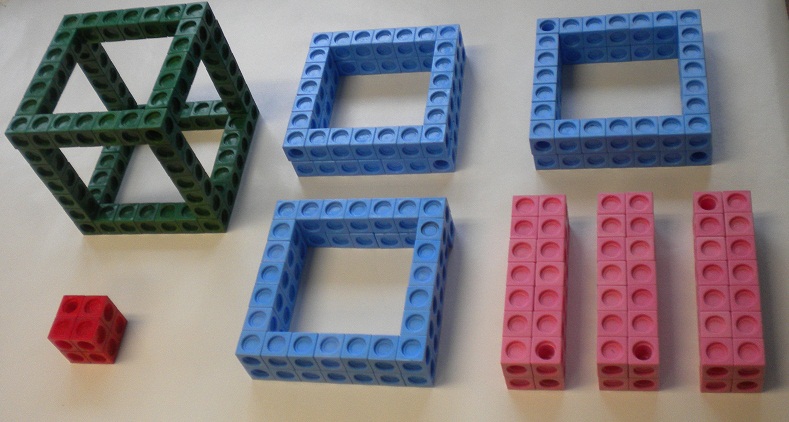
Figure 6. The basic decomposed cube.
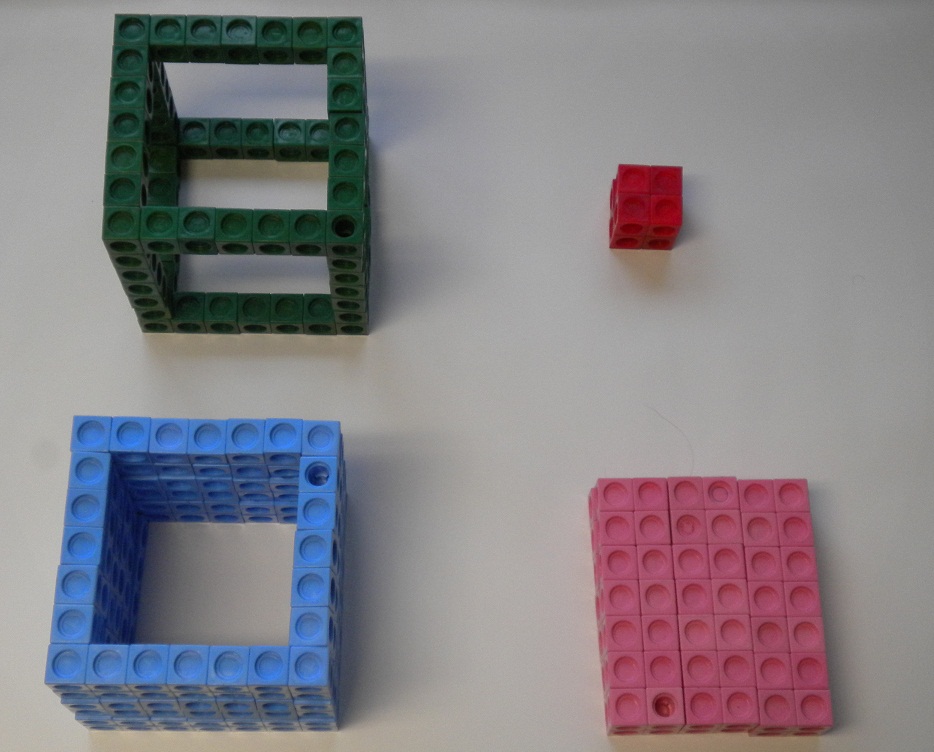
Figure 7. The decomposed cube regrouped for depressing the cube.
As seen in Figure 7, two of the four solids are the green cube on ab and the red cube on bc. The three blue solids in Figure 6 can be stacked, giving a solid whose base is the square on ab and whose height is thrice bc, and so the blue solid in Figure 7 has volume 3(ab)2(bc). Likewise, the three pink solids can be combined, giving a solid of volume 3(ab)(bc)2.
The solid of volume 6(ac)2 is also decomposed by breaking the side ac at the point b. The decomposition can be regrouped into three solids, as shown in Figure 9.
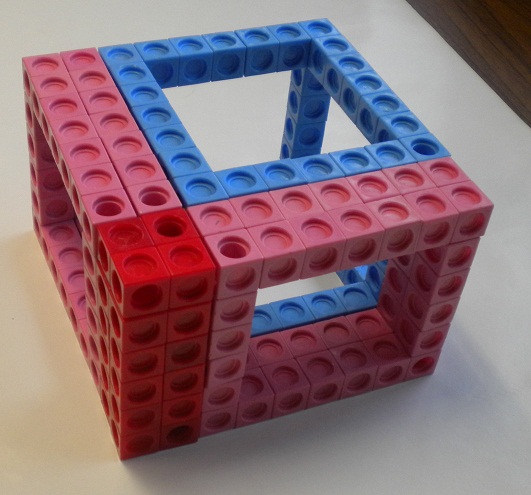
Figure 8. The solid with height 6.
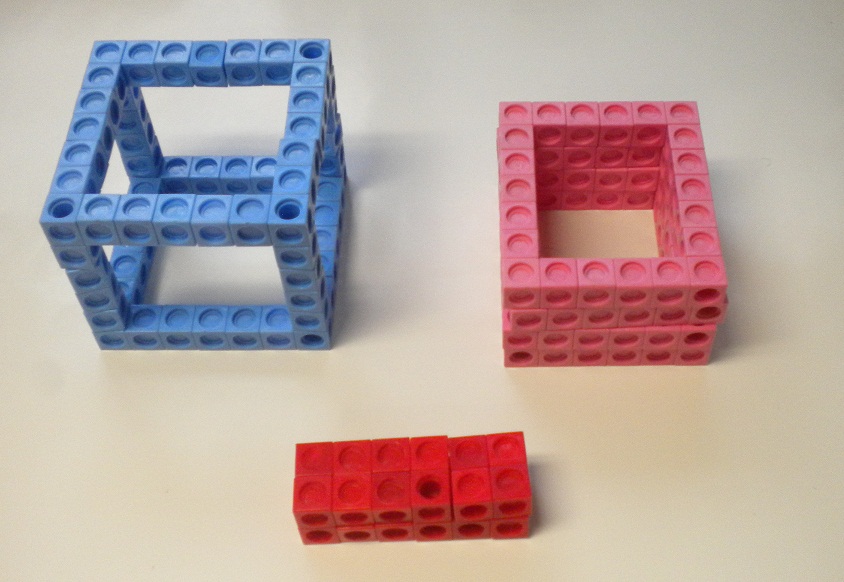
Figure 9. The solid with height 6 decomposed.
The blue solid has base (ab)2 and height 6, and the red solid has base (bc)2 and height 6. The two pink solids can be combined to yield a solid of volume twice 6(ab)(bc), or 12(ab)(bc).
Up to this point the cut at b has been arbitrary. Cardano asked, where does this cut have to be so that the solids in Figures 4 and 5 whose bases are the square on ab have the same volume? In our pictures, this means determining the location of b so that the blue solids in Figures 7 and 9 have the same volume. In the cube ae, the blue solid has volume 3(ab)2(bc), while the other solid produces a blue solid of volume 6(ab)2. For these to be equal, we need 3(bc) = 6, or bc = 2. Once this had been determined, Cardano simplified the problem by eliminating solids with the same volume from each side.

Figure 10. The decomposed cube ae.
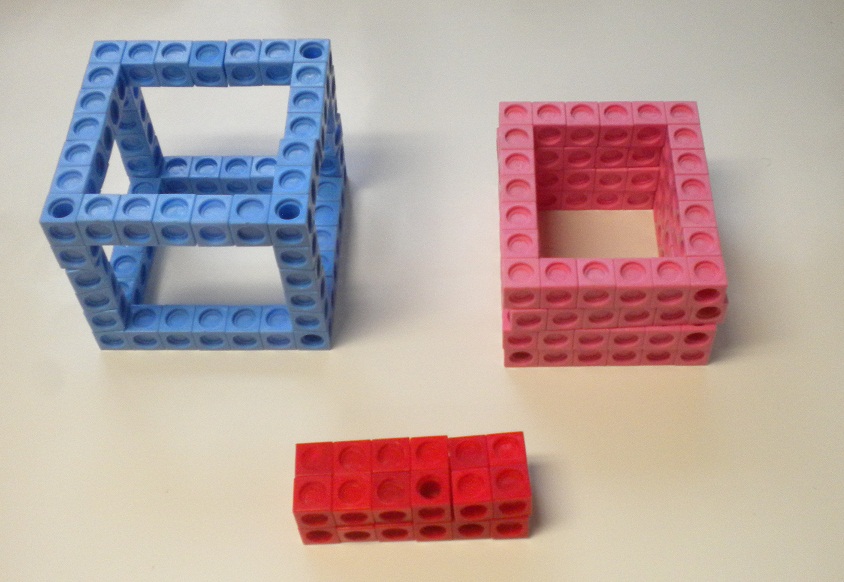
Figure 11. The decomposed solid of height 6.
The two blue solids in Figures 10 and 11, by choice of b, have the same volume, and so they cancel each other. Given bc = 2, the pink solid in Figure 11 has twice the volume of the pink solid in Figure 10, while the red solid in Figure 11 has volume thrice that of the red solid in Figure 10. Cancelling the common volumes gives us Figure 12.
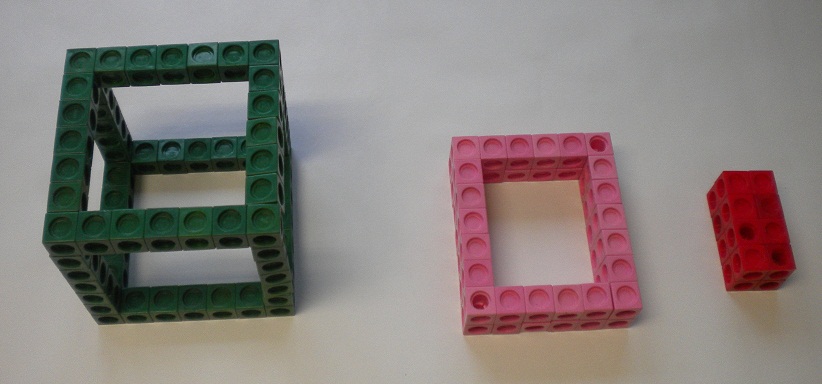
Figure 12. What's left after cancellation.
We have the green cube on ab on the left side, while the right side consists of a pink solid of volume 12(ab) and a red solid of volume 16. Since we have set \(y\) to be the length ab, symbolically we have \(y^3=12y+16.\) To return to Cardano’s original problem, we add back in the number \(b=100,\) ending with \(y^3=12y+116.\)
Cardano’s method of depressing the cubic provides a good illustration of some aspects of abbaco mathematics. This demonstration is presented as a canonical problem, one with specific coefficients. The method, however, is completely general, and Cardano explicitly stated the key step, that “bc is one third the coefficient of \(x^2.\)” This demonstration is canonical for problems of the type “cube equal to square and number,” with any positive coefficients whatsoever. Just as the physical solids in the pictures stand for general solids, so too the equation \(x^3=6x^2+100\) stands for the general equation \(x^3=ax^2+b.\)
William B. Branson (St. Cloud State University), "Solving the Cubic with Cardano - Depressing the Cubic," Convergence (September 2013), DOI:10.4169/convergence20131001




